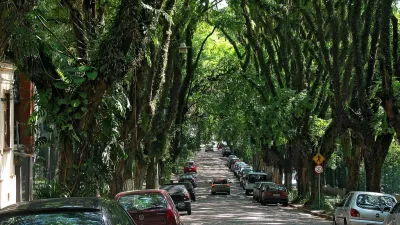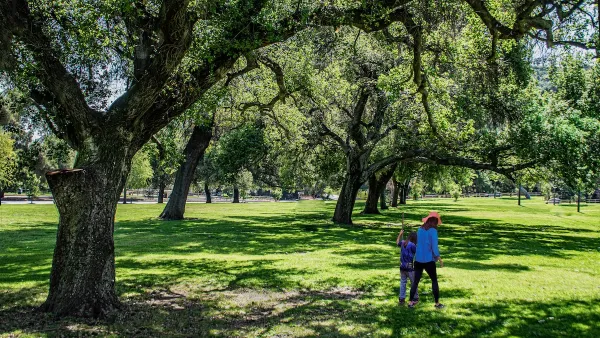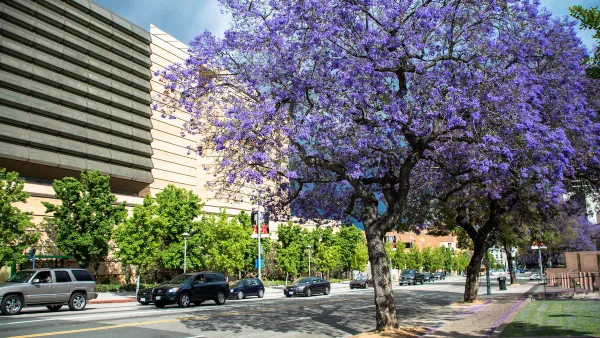New research reveals more of the details of how trees provide therapeutic effects for humans.

Alex Hutchinson writes of the larger implications of a new study published by the journal Scientific Reports into the nature of the therapeutic benefits of trees.
A team of researchers in the United States, Canada, and Australia, led by the University of Chicago psychology professor Marc Berman, collected two large data sets from the city of Toronto, according to Hutchinson, "both gathered on a block-by-block level; the first measures the distribution of green space, as determined from satellite imagery and a comprehensive list of all five hundred and thirty thousand trees planted on public land, and the second measures health, as assessed by a detailed survey of ninety-four thousand respondents."
The study's findings: "an additional ten trees on a given block corresponded to a one-per-cent increase in how healthy nearby residents felt." Berman is quoted directly to add perspective:
'To get an equivalent increase with money, you’d have to give each household in that neighborhood ten thousand dollars—or make people seven years younger,' Berman told me.
A discussion of some of the study's subtler details, however, inspires Hutchinson to muse on large questions, like how the findings relate to a theory proposed by William James in the late 19th century about "voluntary" and "involuntary" attention. Berman's study produces a counter point to recent research identifying the negative effects of the urban tree canopy, as well as a chance for Hutchinson to propose a closer attention to the details of Berman's studies for the purposes of public health benefits.
FULL STORY: How Trees Calm Us Down

National Parks Layoffs Will Cause Communities to Lose Billions
Thousands of essential park workers were laid off this week, just before the busy spring break season.

Retro-silient?: America’s First “Eco-burb,” The Woodlands Turns 50
A master-planned community north of Houston offers lessons on green infrastructure and resilient design, but falls short of its founder’s lofty affordability and walkability goals.

Delivering for America Plan Will Downgrade Mail Service in at Least 49.5 Percent of Zip Codes
Republican and Democrat lawmakers criticize the plan for its disproportionate negative impact on rural communities.

Test News Post 1
This is a summary

Test News Headline 46
Test for the image on the front page.

Balancing Bombs and Butterflies: How the National Guard Protects a Rare Species
The National Guard at Fort Indiantown Gap uses GIS technology and land management strategies to balance military training with conservation efforts, ensuring the survival of the rare eastern regal fritillary butterfly.
Urban Design for Planners 1: Software Tools
This six-course series explores essential urban design concepts using open source software and equips planners with the tools they need to participate fully in the urban design process.
Planning for Universal Design
Learn the tools for implementing Universal Design in planning regulations.
EMC Planning Group, Inc.
Planetizen
Planetizen
Mpact (formerly Rail~Volution)
Great Falls Development Authority, Inc.
HUDs Office of Policy Development and Research
NYU Wagner Graduate School of Public Service





























